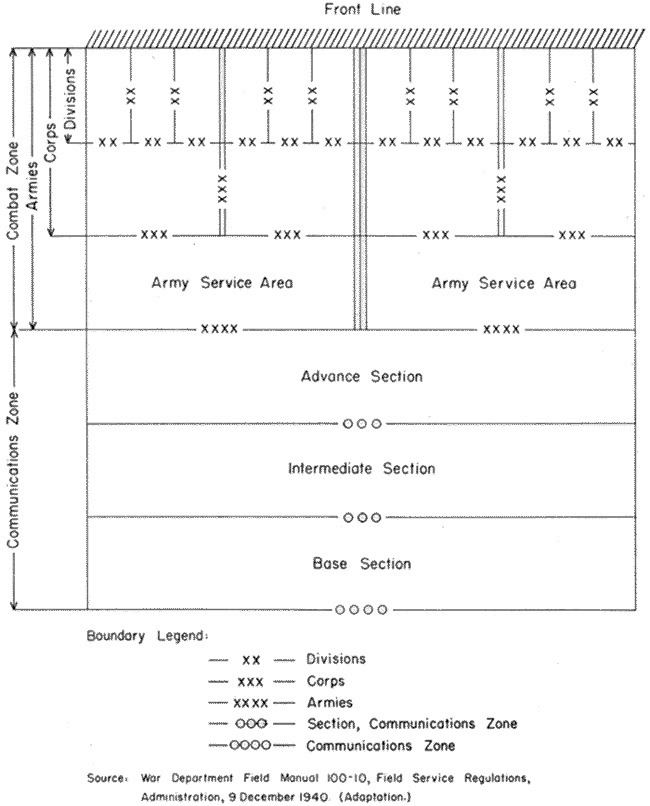 | ||
Tactical change in the mediterranean theater of operations dr gregory hospodor
The Mediterranean Theater of Operations, United States Army (MTOUSA), originally called the North African Theater of Operations (NATOUSA), was the American term for the theater of operations covering North Africa and Italy during World War II. American operations in the theater began with the Allied Expeditionary Force, which landed on the beaches of northwest Africa on November 8, 1942, in Operation Torch. They ended in the Italian Alps some 31 months later with the German surrender in May 1945.
Contents
- Tactical change in the mediterranean theater of operations dr gregory hospodor
- Command structure
- Termination
- Campaigns and operations
- A theater of operations
- References
Command structure
The operational command of the MTO USA was a combined U.S.–British operational command called Allied Forces Headquarters (AFHQ), which planned and directed ground, air, and naval operations and military government activities in the North African and Mediterranean theatres of operations. It was created on September 12, 1942 to launch a combined U.S.–British operation against the northern and northwestern coast of North Africa. In February 1943 the authority of AFHQ was extended to include the British Eighth Army, commanded by Lieutenant General Bernard L. Montgomery, which, having advanced westwards after the Second Battle of El Alamein, was approaching the border of Tunisia where the American, British and French forces serving in the British First Army, commanded by Lieutenant General Kenneth A. N. Anderson, had been fighting the campaign in Tunisia.
Initially AFHQ was located in London, England from September until November 1942. It relocated to Algiers in Algeria in November 1942 and remained there until July 1944. From Algiers it moved to Caserta in Italy until April 1945. Its last relocation was to Leghorn (Livorno), Italy between April 1945 until April 1947.
The initial Commander-in-Chief (C-in-C) of the Allied (Expeditionary) Force, was General Dwight D. Eisenhower. General Eisenhower, as Supreme Allied Commander, had the ultimate responsibility. The British General Sir Harold R. L. G. Alexander was Deputy C-in-C, and was responsible for the detailed planning and preparation, and the actual conduct, of combat operations. In effect, Alexander was the ground commander.
Shortly after the establishment of the headquarters, expeditionary was deleted from its title for reasons of operational security. Having overseen the campaign in Tunisia, the invasion of Sicily and the invasion of Italy and the early stages of the Italian Campaign, Eisenhower left AFHQ and returned to England in late 1943 to assume command of the forces assembling for Operation Overlord, codename for the Allied landings in Northern France. He was succeeded at AFHQ by Field Marshal Sir Henry M. Wilson. Wilson's title became Supreme Commander, Mediterranean Theatre of Operations. As such he exercised strategic control over the campaign in Italy. He strongly advocated the invasion of Germany via the Danube plain (instead of Operation Dragoon, codename for the Allied invasion of Southern France), but this did not take place as the Allied Armies in Italy (AAI) were constantly weakened to support other theaters of war. Wilson was in command for just under a year, until he was sent to Washington in December 1944 as head of the British Joint Staff Mission. Wilson was succeeded by Field Marshal Sir Harold Alexander who was Supreme Commander and commander of AFHQ until the end of the war.
For administrative purposes, U.S. components were responsible to Headquarters North African Theater of Operations, United States Army (NATOUSA), from February 14, 1943 (NATOUSA redesignated Mediterranean Theater of Operations, United States Army, MTOUSA, October 26, 1944). The British components were responsible to General Headquarters Central Mediterranean Forces (CMF), from October 1, 1945.
Termination
Headquarters MTOUSA and General Headquarters CMF formally separated from AFHQ on October 1, 1945, leaving AFHQ to consist of a small interallied staff responsible for combined command liquidation activities and commanded by Lieutenant-General Sir William D. Morgan as Supreme Allied Commander Mediterranean. AFHQ was abolished, effective September 17, 1947, by General Order 24, AFHQ, September 16, 1947.
Campaigns and operations
See also U.S. campaigns in WWIIA theater of operations
The term "theater of operations" was defined in the [American] field manuals as the land and sea areas to be invaded or defended, including areas necessary for administrative activities incident to the military operations (chart 12). In accordance with the experience of World War I, it was usually conceived of as a large land mass over which continuous operations would take place and was divided into two chief areas-the combat zone, or the area of active fighting, and the communications zone, or area required for administration of the theater. As the armies advanced, both these zones and the areas into which they were divided would shift forward to new geographic areas of control.
